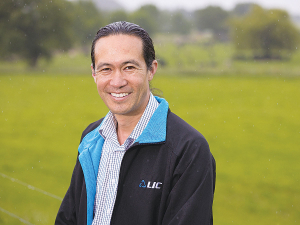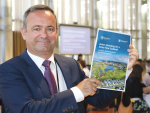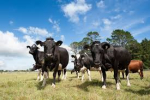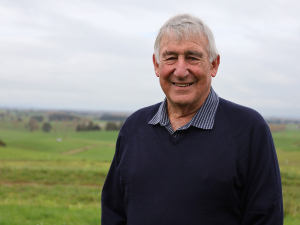Farmer co-operative LIC says changes to the current animal evaluation model proposed by DairyNZ isn’t the way forward.
In a submission to DairyNZ last week, LIC says it welcomes increased competition around herd improvement.
“We understand some farmers might want a simpler animal evaluation system with a single index and we will continue to work with DairyNZ to find a solution for that – but their proposal is not the way forward.
“We strongly believe that the co-operative is in a strong position to deliver for you under the current model, and we will continue to put our heads down to focus on our core mission to support herd improvement in New Zealand.”
In a letter to farmer shareholders, LIC chief executive David Chin says the co-op, representing over 9000 dairy farmers, has invested heavily in genomics on their behalf.
China says this is delivering significant value to LIC farmers.
“Genomic bulls are widely available for AB and the majority of our 9000+ farmers are utilising them,” says Chin.
DairyNZ - through subsidiary New Zealand Animal Evaluation Ltd (NZAEL) - believes that creating one animal evaluation index would ensure breeding decisions are made consistently.
It proposes that a single evaluation will be co-ordinated by NZAEL, as an industry good, credible source of data available to everyone to use.
The sector is currently using three Breeding Worth animal evaluation indexes – owned respectively by LIC, CRV and NZAEL. DairyNZ chair Jim van der Poel says this creates confusion in the sector – and sub-optimal outcomes.
However, in his letter, Chin says it’s not clear who the proposal really benefits.
“While the proposal aims to facilitate more competition in the AB market, we note that competition in the AB market exists today in New Zealand, with opportunities already available for new players to enter the market. This is to the benefit of New Zealand farmers, and the existing competition helps to drive investment in R&D.
“The proposal would risk disincentivising investment in R&D without clear benefits for increasing the choice of AB providers for farmers.”
Chin claims the proposal will increase costs to farmers and the industry.
“While the proposal is intended to make genomics more widely available for New Zealand farmers, most farmers in New Zealand have ample access through LIC and are receiving value on farm. DairyNZ is proposing to use farmer-levy money to re-create a genotype database which already exists.
“The proposal also contains an unclear and confusing fee model, with a lack of clarity on how exactly the model would be funded. For example, there is reference to straw levies and levies for cow enrolment via herd record providers as optional charges depending on what other fees are included.
“Although it is unclear how DairyNZ intends to enforce collection of these levies, ultimately all costs are borne by the industry one way or another.”
Chin also questions how the proposed single breeding index would operate without the participation of LIC and other existing AB companies.
The proposal requires all parties to be involved, including LIC.
But Chin says the current model does not encourage participation by current industry participants.
“The proposal fails to address how the model would operate and how it would be funded should existing companies, including LIC, choose not to participate.”
LIC also claims the ‘size of the prize’ is based off flawed assumptions and is not accurate.
It is not clear what the problem is that DairyNZ is trying to solve, says Chin.
“The proposal claims that there is an opportunity of $1.36 billion return on farm over the next 10 years by increasing BW year-on-year through genomics. There is no independent modelling or evidence to support this opportunity. In fact, the modelling associated with the proposal is retrospective and only looks at data up to 2020.”
Submissions on DairyNZ’s proposal close this week.


















